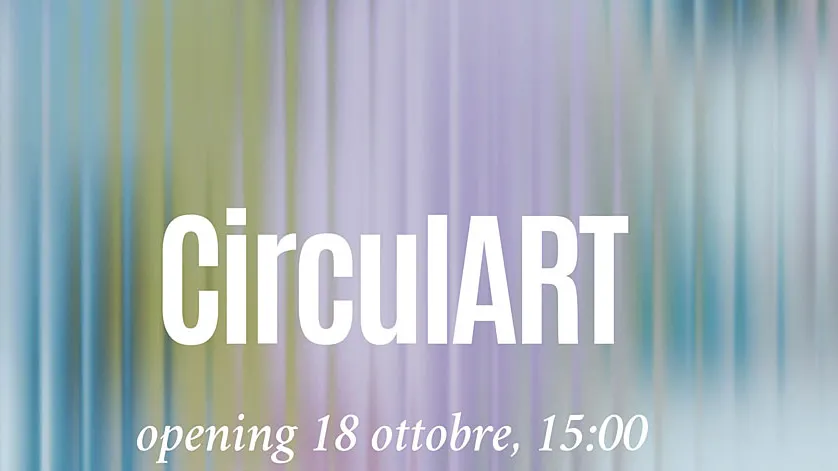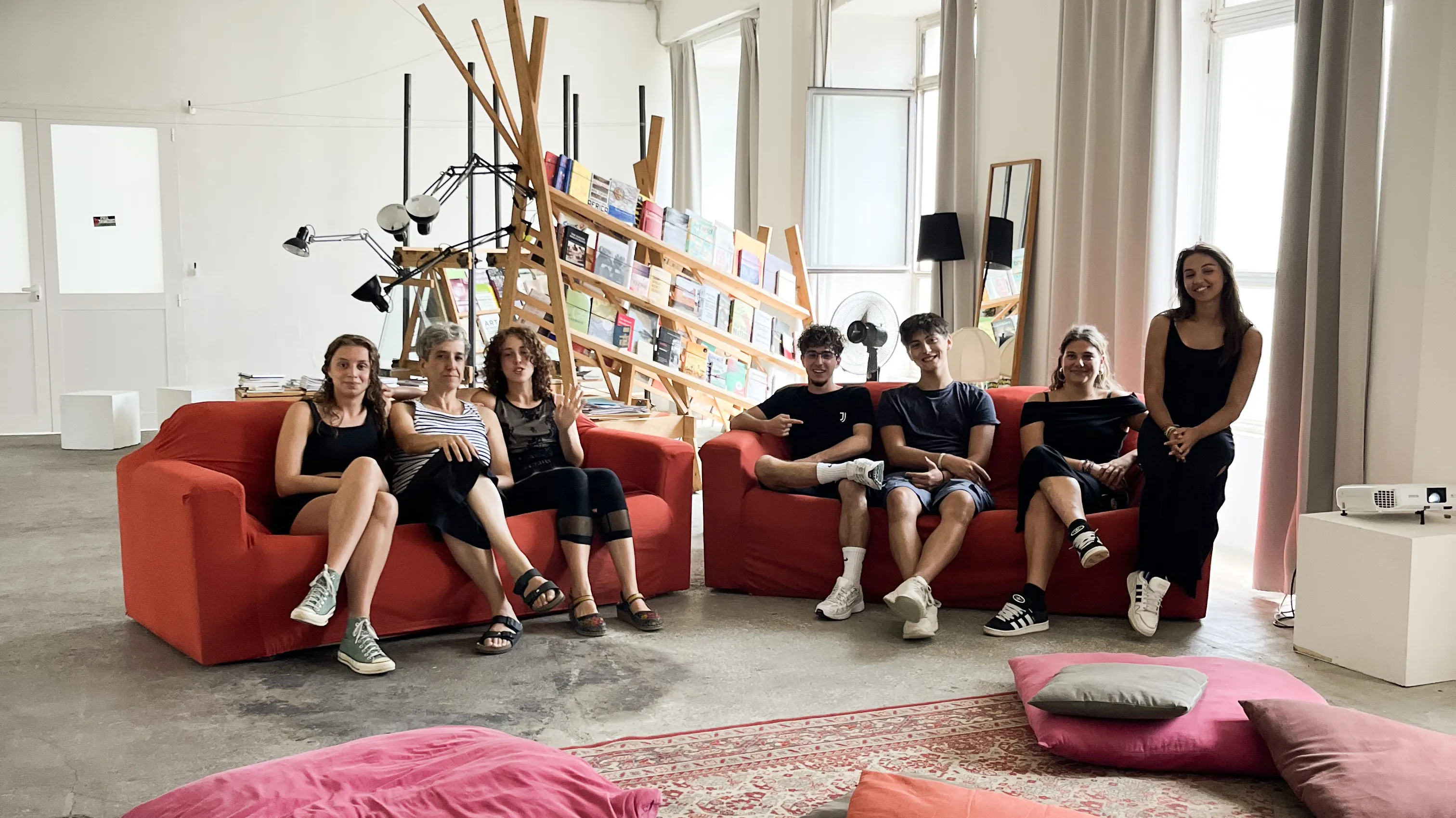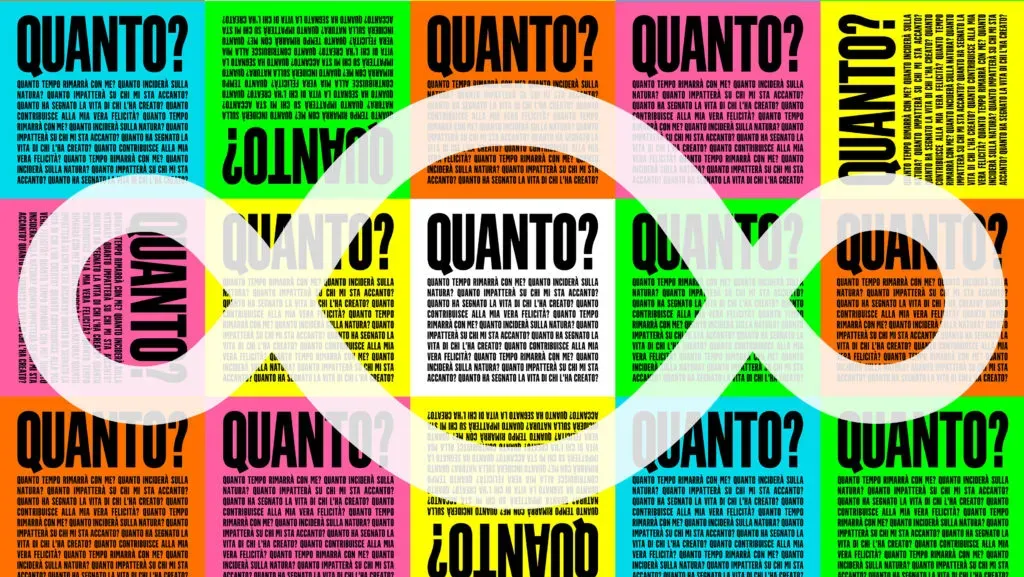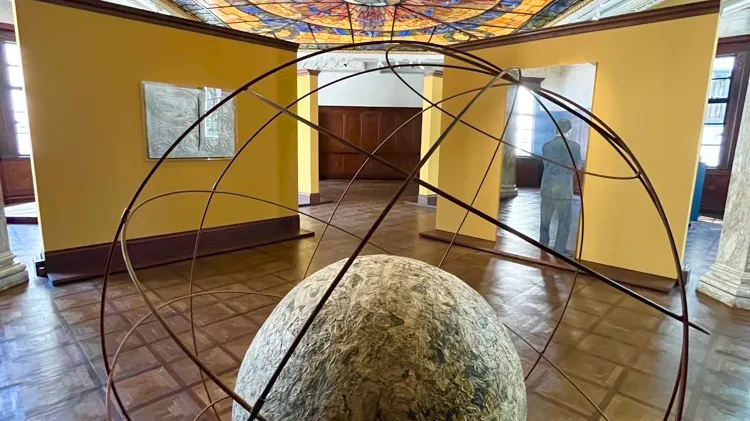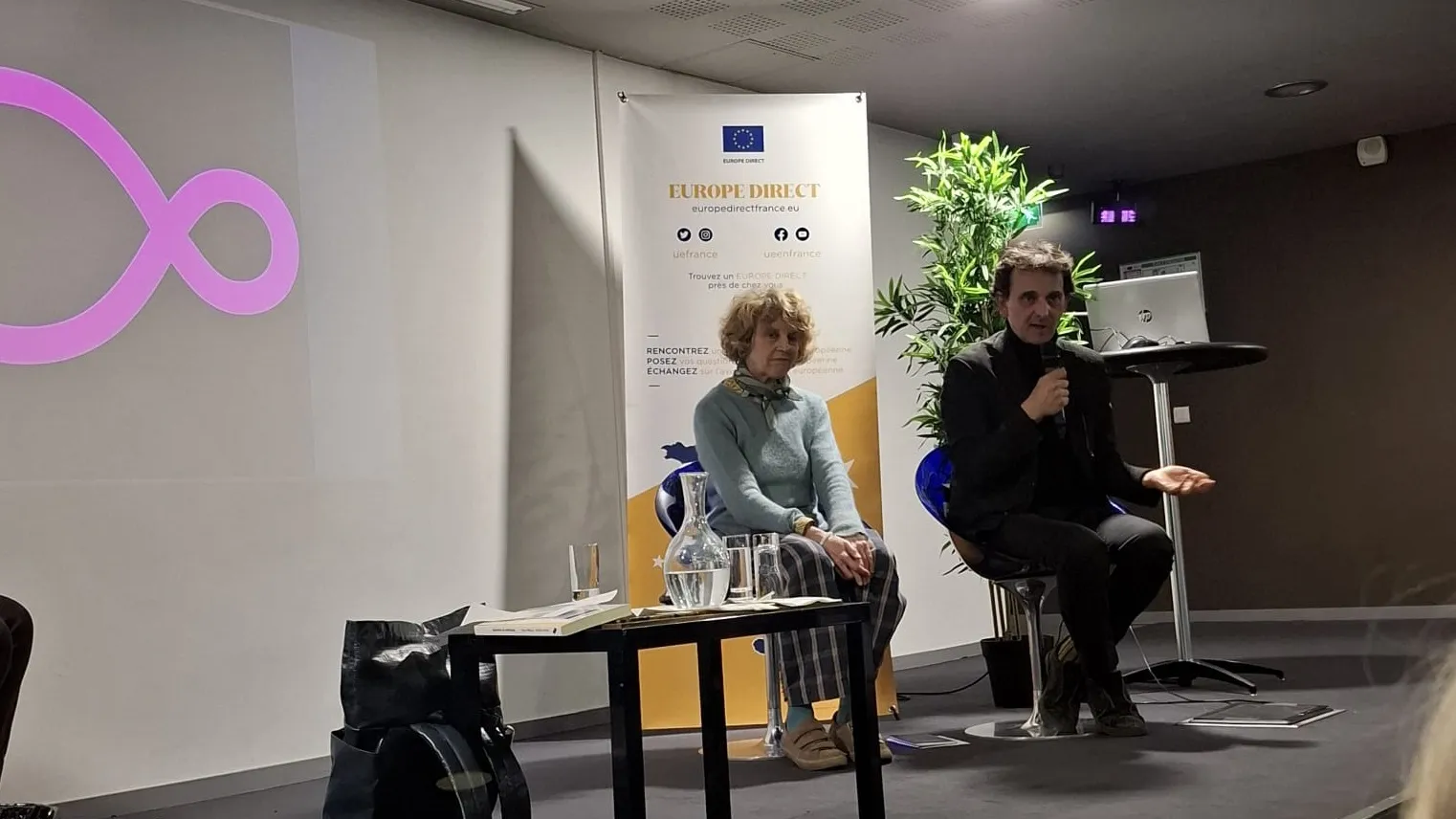What can we
help you find?
Ricerche suggerite

Manifest, explode, create: The Glorious Mothers collective and the thundering horizontality
From July 19 to 27, 2025, The Glorious Mothers hosted the "How to Blow Up a Manifesto?" residency for mothers, daughters, and sons at the Pistoletto Foundation. This unique experience in Italy intertwined artistic practices, curation, and activism, culminating in an open studio. Through shared works, texts, and performances, the residency challenged the patriarchal iconography of the mother, proposing new imagery. Let's explore what emerged through an interview with two of the collective's artists.
Thanks to the invitation of the Pistoletto Foundation and as part of UNIDEE Residency Programs, the collective The Glorious Mothers once again brought their residency format for mothers with daughters and sons to the attention of the Italian art world. This type of residency, unique in Italy, was designed to address the lack of support for the work of mother artists. The residency, titled "How to Blow Up a Manifesto?", was an opportunity to continue working on the works created over the past two years, which have generated a fruitful, stimulating, and at times explosive dialogue. It's no coincidence that the concept of "explosion" permeated this edition of the residency like a detonation. The Glorious Mothers explore how to explode the iconography of the mother in patriarchal Western culture, proposing a new image: disjointed, bestial, non-conformist, queer. During the residency, the Learning Environments Office also organized activities for children, thus collaborating to create a space for both work and care.
The Collective
The Glorious Mothers is a collective of artists residing in Italy who share the common denominator of being mothers of school- or preschool-age children. The collective addresses the issue of motherhood and parenthood within the visual arts. Through political, linguistic, and artistic work, the group seeks to give voice to the concerns of mothers who are artists and those who identify as primary caregivers of their daughters and sons, bringing the topic of parenthood to the attention of art institutions. Through theoretical and practical research, The Glorious Mothers works to deconstruct a stereotypical image of motherhood tied to the heteronormative family institution, seeking to make visible the multiple ways of being a parent. Since 2022, the collective has organized an annual residency for artists with children, offering them a chance to meet and explore research. The group currently includes Sara Basta (Rome, 1979), Cristina Cusani (Naples, 1984), Dafne Salis (Rome, 1984), Mariana Ferratto (Rome, 1979), the Grossi Maglioni Duo (Francesca Grossi and Vera Maglioni, Rome 1982), Giulia Iacolutti (1985), Caterina Pecchioli (Florence, 1978), Lorena Peris (Fiesole, 1981), and Miriam Secco (Tradate, 1981). The residency at Cittadellarte also included the participation of Lydia Pribisova (curator), Margherita Perugini (museum educator), and Magdalena Jaminska (student at the Academy of Fine Arts in Rome).
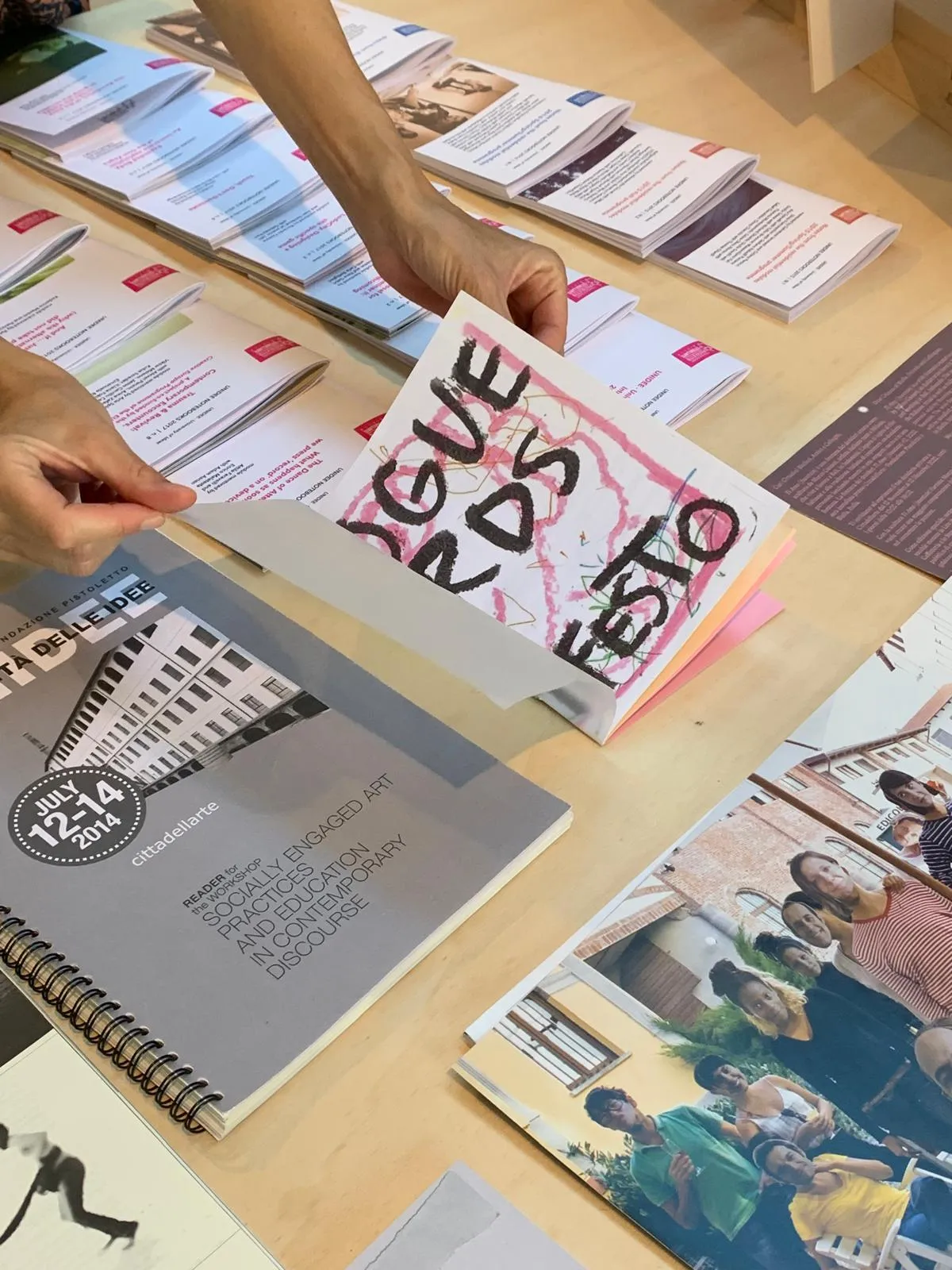

Identity
The collective creates multimedia, installation, and performative works where authorship is shared and questioned. Central to the group's philosophy is the belief that practice should support the individual needs and deepest desires of each participant. The Glorious Mothers rejects efficiency as an absolute value, instead extolling relationships, care, mutual support, and relaxation. In this context, participation and process are the most important aspects of collective practice.
The Open Studio and the Interview
On Friday, July 25, The Glorious Mothers opened the doors of their studio at Cittadellarte, lighting the fuse that led to an explosion of ideas and projects, among the works and texts that have accompanied and inspired them, in an open dialogue with the public, complete with a convivial snack. Let's discover all the details by listening to two of the collective's artists, Francesca Grossi and Miriam Secco.
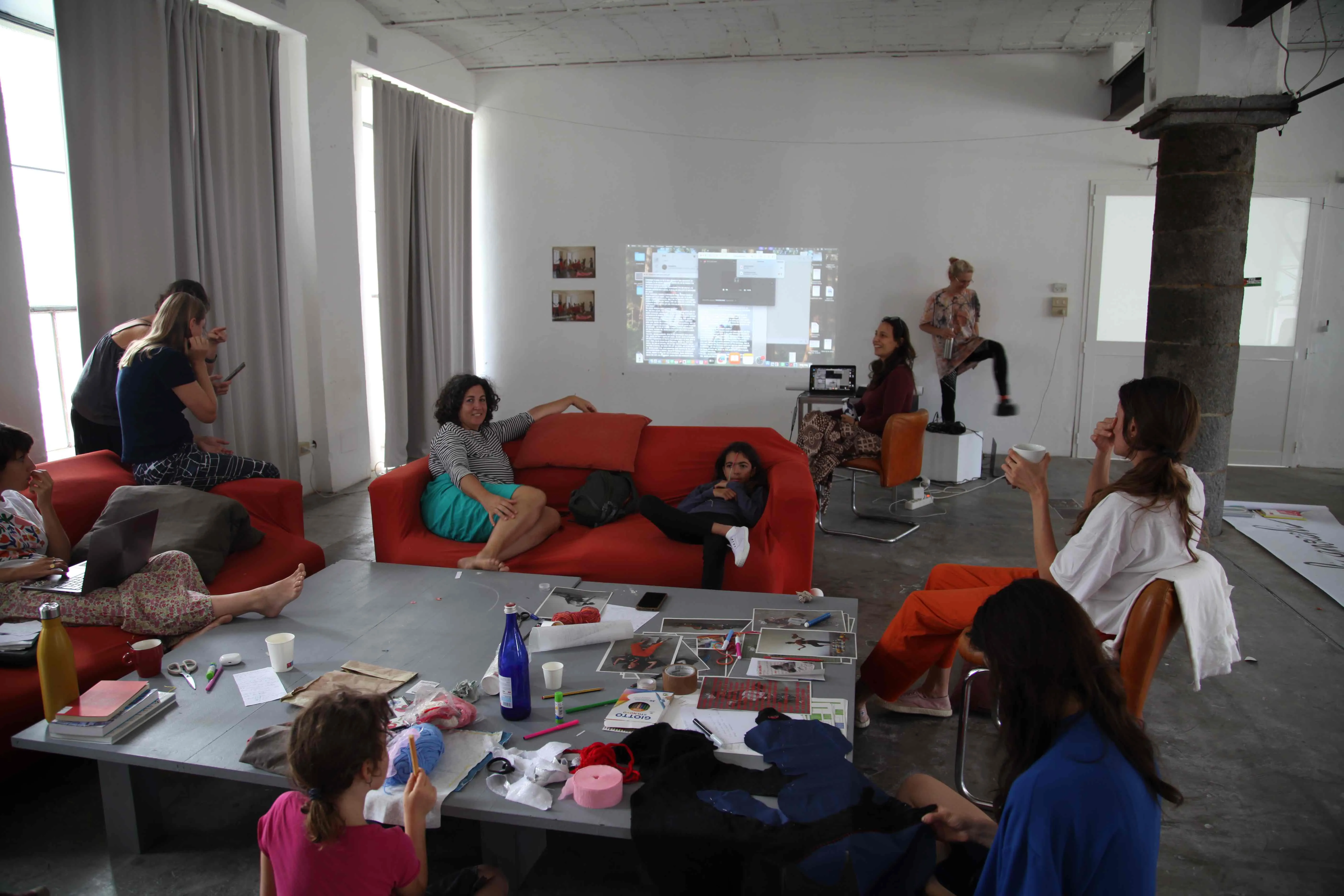
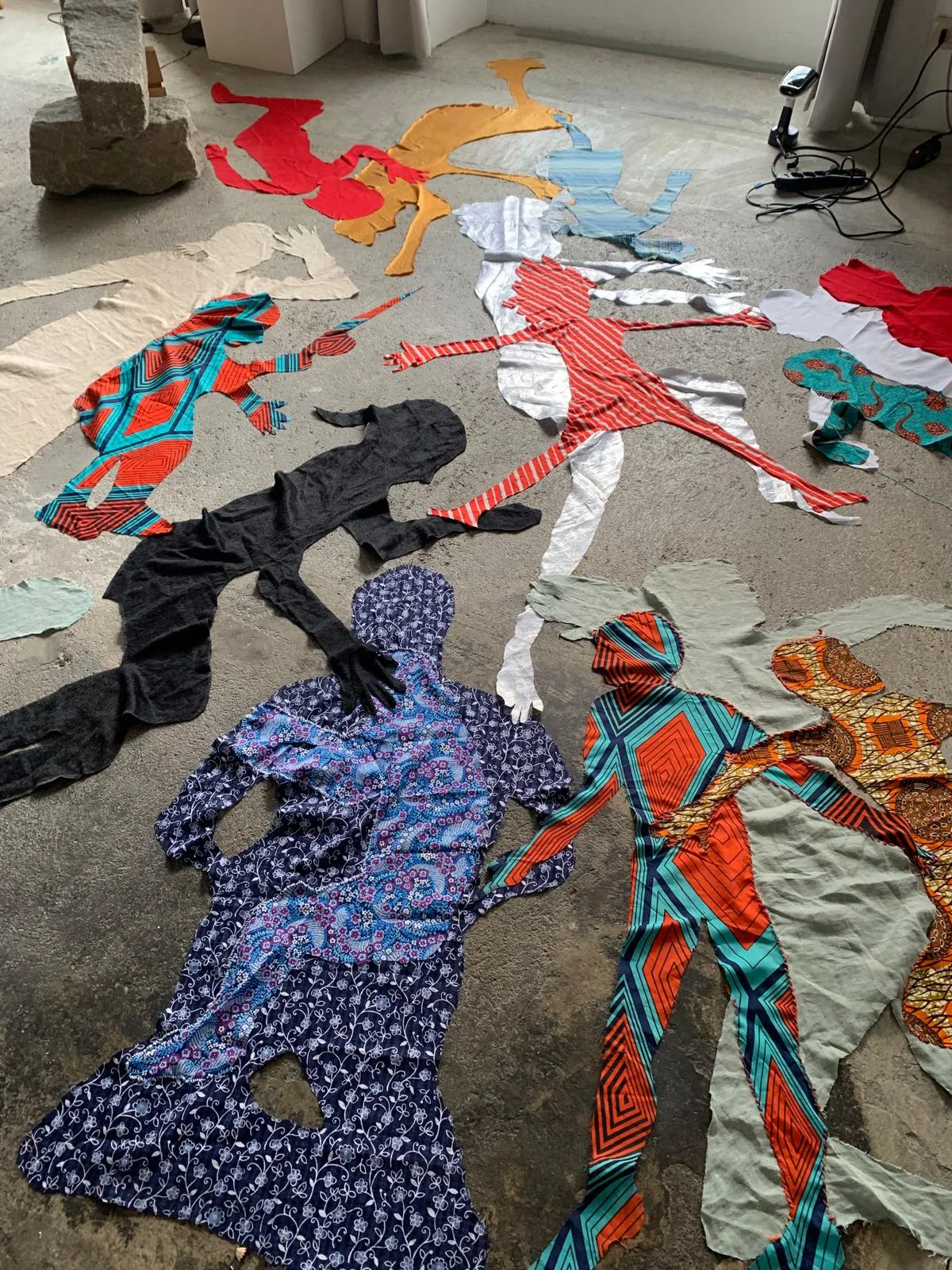
Let's begin by focusing on the sound installation presented at the open studio. A work that featured seemingly disturbing, almost hysterical laughter. The effect of "Laugh, Laugh" was powerful and impactful. What lies behind this work?
Francesca - As a collective, we recently began working on shared works, as until now we've been working to highlight, through internal reflection within the group and during public presentations, the critical issues surrounding the recognition of artistic and healing work. Thanks to the Foundation's spaces and the studio made available to us, we've experimented with another form of relationship between us, aimed, in a certain sense, at production. This latter, however, is always linked to practices we share when we're together; therefore, beyond material production, the unproductive moments of exchange and collective reflection are important.
So, laughter also reflects, in its tones, the collective's emotions?
Francesca - Laughter is the result of a physical practice we experimented with during the residency. It's interesting to see how the sound emanating from our bodies evoked different impressions. It may sound like crying, almost like a wail; at times, you can sense the physical effort that generated the laughter. All these nuances reflect the complexity of our experience as artists and mothers. It's a disturbing laugh; with it, we claim not only a space of pleasure, but also the possibility of transforming a state of intolerance. The sound installation draws on the saying "Laugh, laugh, mum made gnocchi," which we transcribed onto a banner to highlight the connection between care work and artistic work, both of which share a lack of financial recognition. We played with the various meanings of the saying, which in Roman dialect refers to the money earned by the mother through prostitution. The installation encompasses all of this.
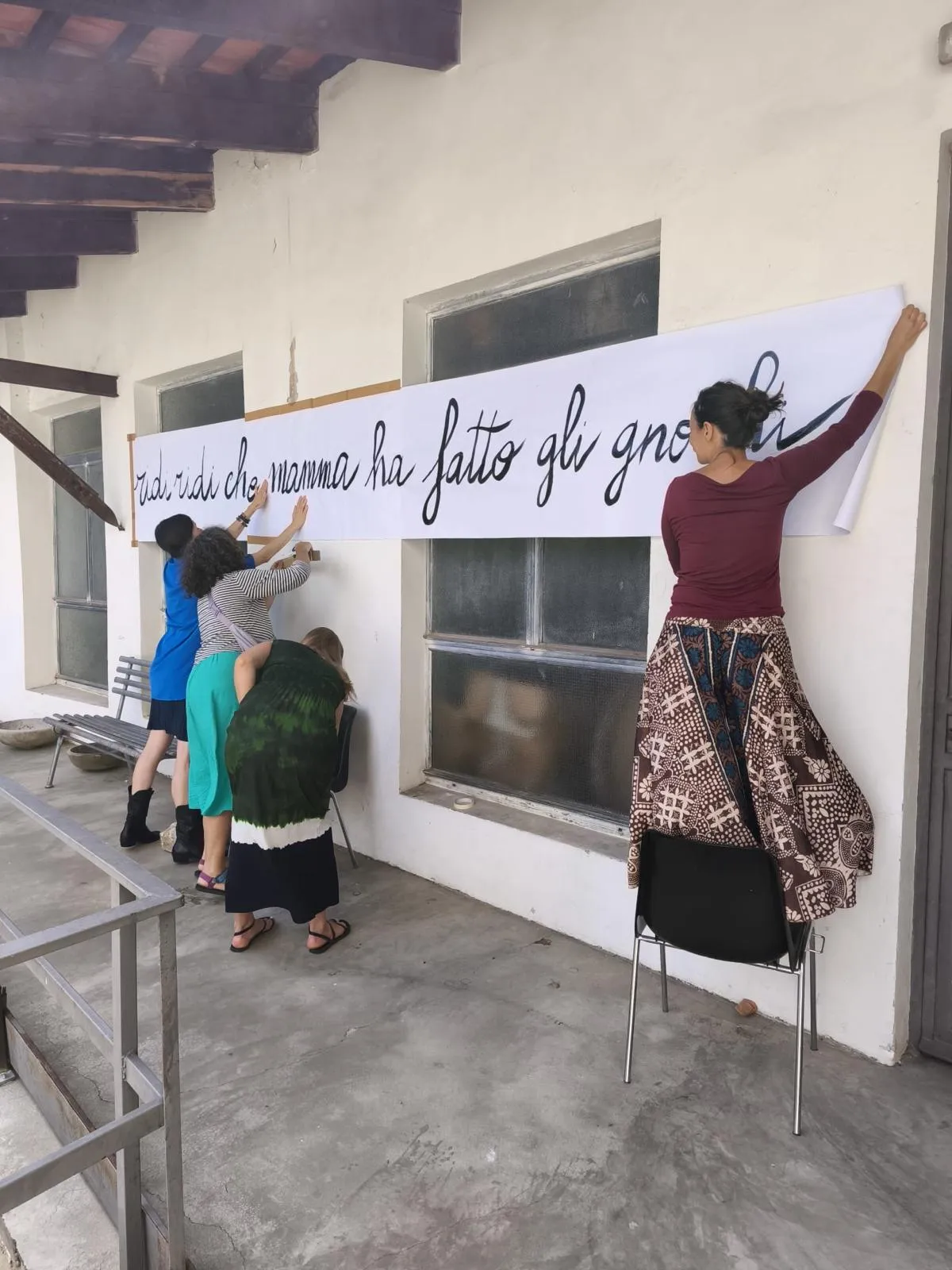
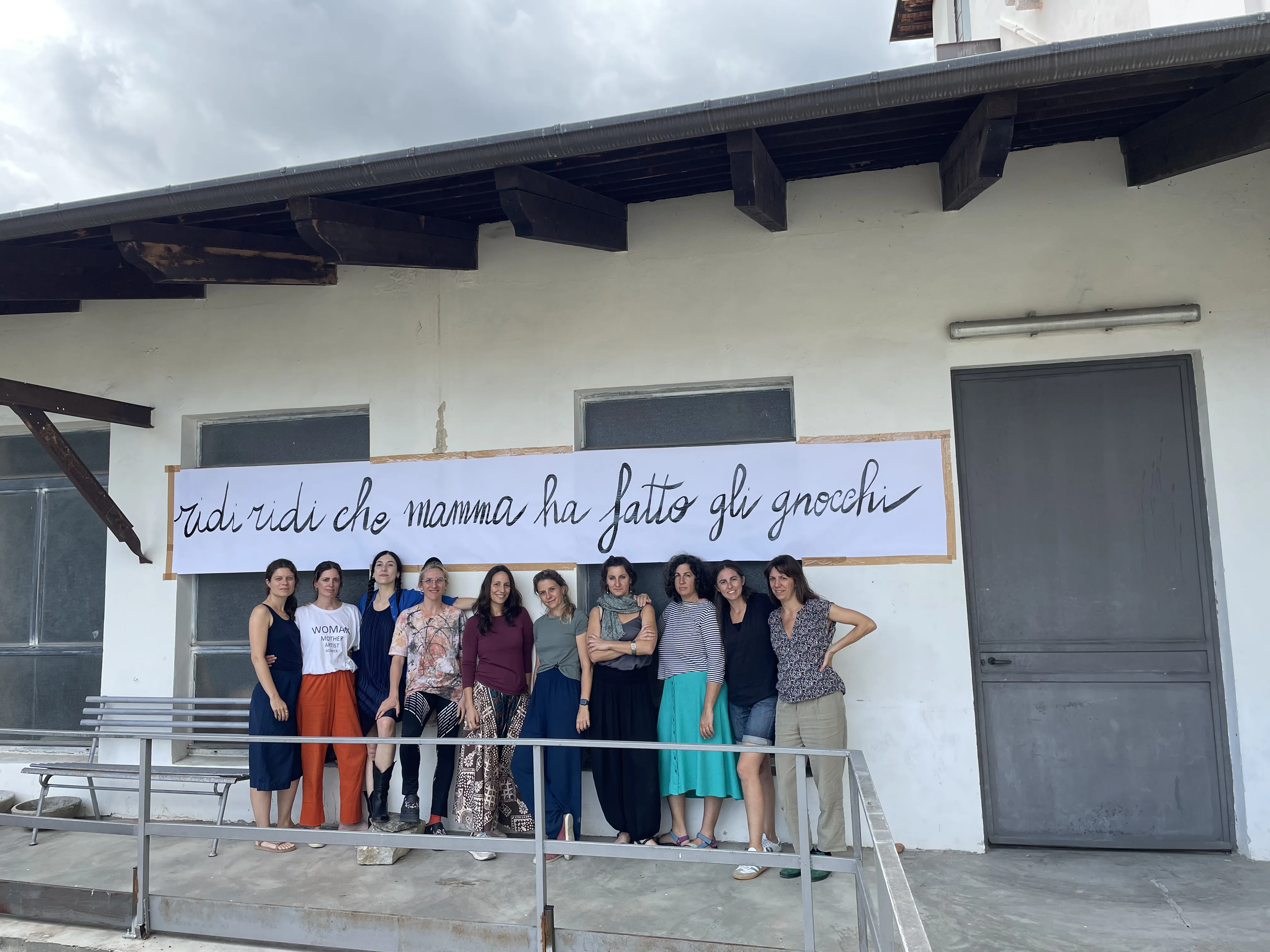
In this work, even as a collective, you have succeeded in harmonizing relationships between heterogeneous individuals. What do you think was the contribution of the Pistoletto Foundation to this process? Did the Cittadellarte context prove inspiring?
Miriam - The Cittadellarte context had a significant impact on facilitating our collective work. This is our second year of residency here, so we were familiar with the location and the spaces of the facility. Having a large studio dedicated to us, while our children attended the Cittadellarte summer camp, put us in the ideal position to work. Furthermore, we believe that the Pistoletto Foundation's unique character, a sort of small community, is aligned with the idea of shared care that we foster as a group; the sons and daughters experienced the everyday spaces (bedrooms, kitchen, play areas) in close contact with the other spaces of the Foundation (the museum, the studio, etc.), also realizing that they were in a contemporary art context, even though it felt like a scattered home.
If you both had to choose a key word that you think best describes your experience of the residency in Biella, which would you choose?
Miriam - "Horizontality".
Francesca - "Roaring," because it makes me think of laughter and also of the presence of water, which has always been an important element during our residencies. We've often discussed this topic, and near Cittadellarte this year we even went for a swim in the river. Then there's the sound of the stream that can be heard from the studio, even from the bedrooms... in short, the flow of water has always accompanied our reflections.
As mentioned, your children also "experienced" the Foundation through the summer camp. What feedback have you received from them?
Miriam: Definitely very positive feedback. All the boys and girls have been happy to be in this community setting where they feel safe and at ease. At the same time, we had the opportunity to pursue our artistic practice, in harmony with our children's needs. The children appreciated both the more structured play sessions and the self-directed moments.
A paradigm shift, then: not mere passive entertainment, but engaging and empowering co-authorship.
Francesca: Exactly. This year, my daughters realized first and foremost that they were in an environment connected to art where they could be included. Furthermore, for them, the most meaningful moments were dinner, as they were convivial and collective moments.
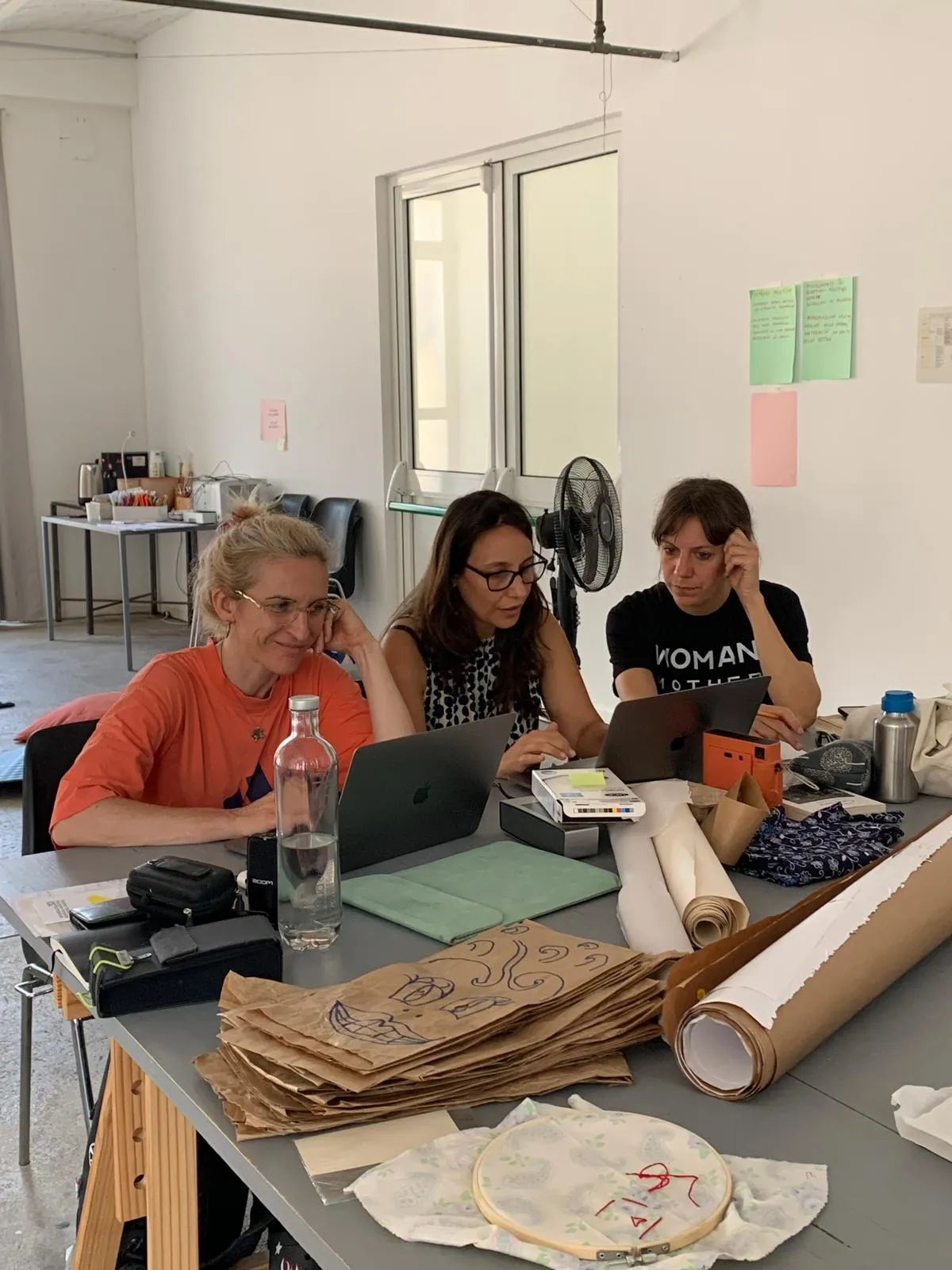
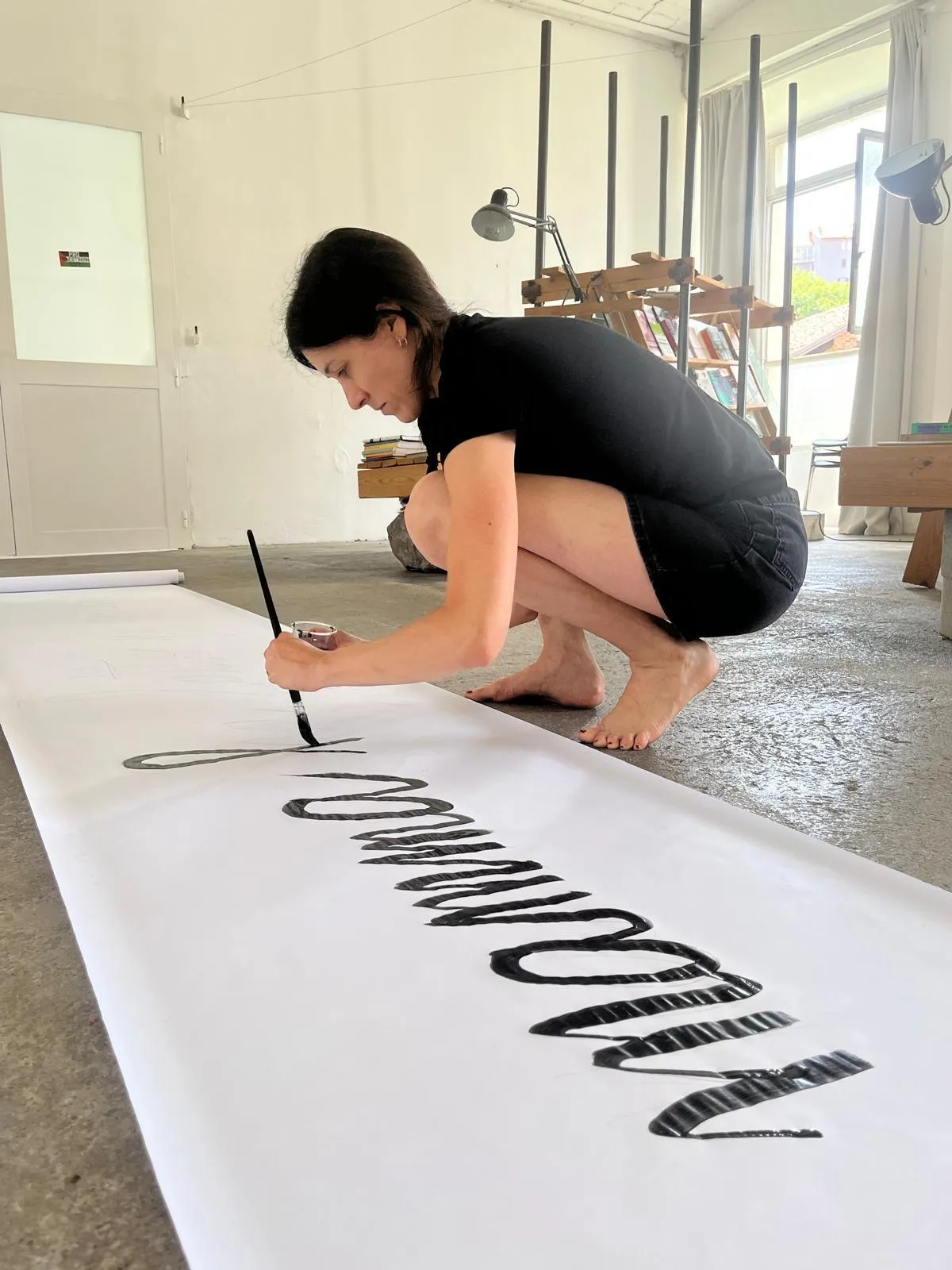
Let's return to the final chapter of the journey, the open studio. What was its purpose?
Francesca - The open studio was a very useful moment for us, first and foremost to observe the work we're doing. Also participating in the residency were Lydia Pribisova, a curator with whom we've established a meaningful dialogue; Margherita Perugini, who specializes in art education; and Magdalena Jaminska, a student at the Academy of Fine Arts in Rome, who came to support us with the younger children. During the open studio, we presented our latest production, as well as the creative work Margherita Perugini is carrying out with our sons and daughters through readings and small interactive devices she created. The final presentation was an opportunity for everyone to engage in the residency process, through play and celebration.
Miriam - The open studio also highlighted our concerns, through the presentation of images and videos, and the reading of a text that is part of a manifesto we are developing.
In conclusion, let's look to the future. In the wake of the residency at Cittadellarte, what are the collective's prospects?
Francesca - This is the fourth edition of the residency. The first were completely self-organized, while the last two at Cittadellarte were more structured. We would like to further develop a residency dedicated to mothers and artists in Italy, which is currently lacking.
Miriam - In our collective, care and mutual support have allowed us to exist as artists. One of our goals is to build a residency model for artists with daughters and sons (or caregivers in general) that focuses on the aspects of care, creating the conditions for pursuing research, despite the complexity, sometimes logistical and financial impossibility. We're also thinking about creating a physical space for international collectives like ours to meet and discuss ideas.

